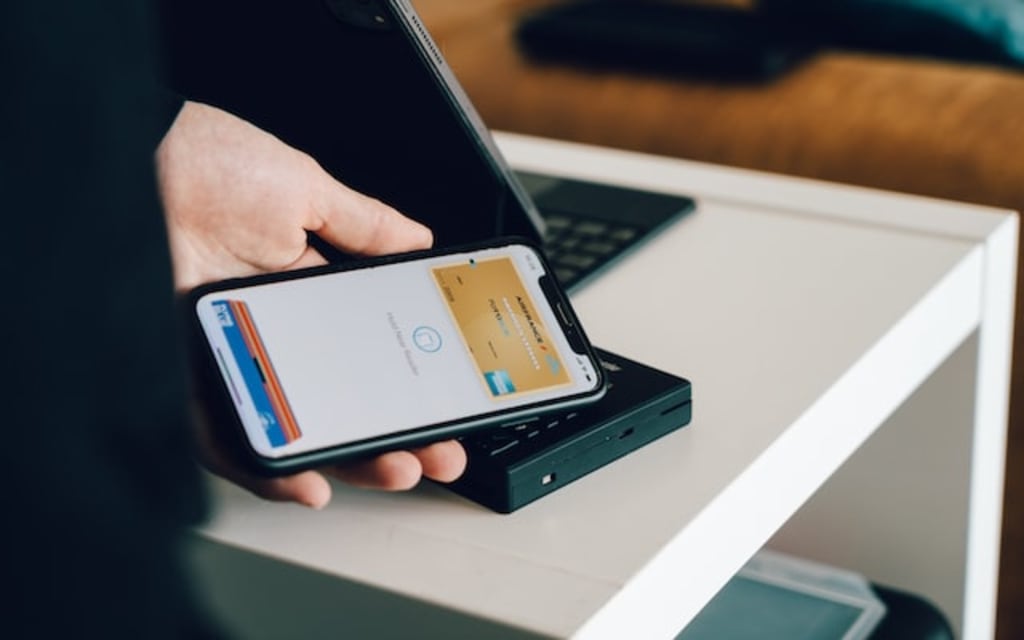The Convenience of Digital Payments
Digital Payments

Tap-to-pay is more than just a consumer convenience. As each year moves us closer to a cashless society, digital transactions have reshaped how we think about banking, security, and commerce. Digital payments are the future of business, and companies looking to get ahead need to understand the full scope of their options.
Digital Payment Trends
While the concept may seem pretty straightforward, there are actually several types of digital payments available to consumers and businesses. The differences in terminology and use-case can be subtle, but each method has its own requirements for hardware and digital security.
Contactless
Contactless payment has been around for a while, but its popularity has soared over the past few years as more US businesses adopt this payment method. According to Apple, 90% of US retailers accept Apple Pay. Traditionally, this capability requires specialized hardware that allows for near-field communication (NFC) between devices. A business needed to invest in a fixed contactless card reader to offer this option to customers.
As Apple has expanded contactless payments to only require an iPhone and an app, we are already seeing signals that card readers may soon be obsolete. As tech companies seek to cut out the middleman with all-in-one hardware systems, we may see an even more streamlined checkout process in the future.
Digital Wallets
A corollary of a cashless society is a walletless society. Contactless payments are already making physical credit cards unnecessary (and less secure). Soon, everything that used to need a wallet could be digital.
Apple Pay, Google Pay, and Samsung Pay are among some of the most well-known and widely-used wallet applications. Not only do they store payment information like credit and debit cards, but they can store gift cards, concert tickets, and even home and car keys. Digital driver’s licenses have been slower to roll out and gain widespread acceptance, but it’s conceivable that photo identification will soon become a key component of digital wallets.
One of the most appealing aspects of the digital wallet is its dedication to security. Whether they’re paying from their phone or their watch, customers need to know that their information is secure. The requirement of biometric authentication, such as fingerprint scanning or facial recognition, ensures that only the authorized owner can use the funds stored on their device. Lowering the risk for fraud and identity theft is a major advantage of digital wallets.
Mobile Point-of-Sales System
Point-of-sale (POS) system is a broad reference to the console or card reader at which a transaction is made. Bulky, stationary cash registers are gradually falling out of favor, and sleek digital consoles are the next big thing, especially when it comes to payment processing for small businesses. The best POS systems combine everything that consumers love about contactless payments and digital wallets with the convenience and mobility of technology.
Increasingly, a point-of-sale system is simply a point-of-sale app, opening the door to a more convenient and mobile-friendly in-person retail and dining experience.
Third-Party & Peer-to-Peer
Without a physical exchange of goods, online shopping requires a cashless alternative. Most sites accept a digital transfer of funds via credit or debit card information, but many also support third-party sites such as PayPal. Because the process is entirely digital, this setup does not require any expensive specialized hardware.
Peer-to-peer (P2P) payments are another quick and easy way to transfer funds, especially when it comes to informal transactions. Facilitated by platforms such as Apple Cash and Venmo, P2P payments empower users to take advantage of the convenience and security offered by modern technology.
Why Go Digital?
Digital payments have quickly become popular among retailers, dining establishments, small businesses, and online storefronts. When your primary goal as a profitable business is to make money, efficiency and ease of use are key. Digital payments offer this and much more. Not only will a cashless system benefit the customers, but it can streamline financial management for the business as a whole. So, why go digital? Let’s break it down.
Convenience. Customers will appreciate the convenience of pulling out their phone or simply tapping their card on a reader. It makes transactions much easier and less cumbersome. Not only that, but it allows customers to shop even if their physical wallet is not present.
Workflow. Digital payments are beneficial from a business perspective as well. For those managing the POS, the friction inherent to typical card-based transactions (inserting, swiping, signing, authenticating, waiting, etc.) is significantly decreased. This means increased efficiency and less wait time for customers.
Security. Whether it’s a one-tap checkout made in store or an encrypted transaction made online, digital payments are fundamentally more secure. The fact that there are fewer points of contact, combined with the biometric security that comes standard with digital wallets, translates directly to an experience built around security. This is vital to the success of any business, small or otherwise.
The Future of Commerce
We conduct much of our lives from the palms of our hands. With internet-enabled smartphones and a growing selection of wirelessly-connected devices at our disposal, we have grown accustomed to convenience. Digital payments are simply a natural evolution of that mindset, not to mention the advantages that come with such a system: security, efficiency, mobility, and ease of use. We may be decades away from a truly cashless society, but the direction of the future is clear.
About the Creator
William Powell
William Powell is a writer and educator with a passion for marketing. He enjoys learning about the latest business trends and analyzing how global events impact domestic and international economies.






Comments
There are no comments for this story
Be the first to respond and start the conversation.